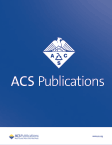摘要 PO2-12-11:他莫昔芬对乳腺癌患者的眼部毒性
IF 3.4
Q2 PUBLIC, ENVIRONMENTAL & OCCUPATIONAL HEALTH
引用次数: 0
摘要
背景:他莫昔芬治疗乳腺癌方案的最新建议表明,应使用他莫昔芬五至十年。这主要取决于药物在体内的累积剂量。尽管他莫昔芬有多种用途,但对其进行的各种研究都没有得出结论性结果。研究目的本研究旨在探讨使用他莫昔芬对乳腺癌进行激素治疗时引发的视网膜病变。研究方法在 Al-Mouwasat 大学医院进行了一项横断面研究,根据(G-Power)抽样调查了 130 只眼睛,统计功率为 95%。研究人员向参与者简要介绍了研究内容,并征得他们对伦理问题的同意。然后,对参与研究的患者进行了询问和临床检查,并询问了他们的病史、乳腺癌诊断时间以及他们接受或正在接受的治疗方案的详细信息。用自动屈光仪测量屈光不正,然后在裂隙灯上检查屈光介质,再测量矫正和未矫正视力。最后,在确保符合纳入标准并排除符合一项或多项排除标准者后,使用 SD-OCT 技术进行光学相干断层扫描,分别测量和查看 1-3-6 毫米圆圈内的视网膜厚度图,以注意其可能发生的变化。结果我们发现,无论累积剂量多少,使用他莫昔芬都会导致 3 毫米圆圈内上下部分的黄斑厚度值增加,6 毫米圆圈内上下部分的黄斑厚度值显著减少,此外,3 毫米和 6 毫米圆圈内的鼻侧部分厚度也会减少。结论我们得出的结论是,接受他莫昔芬治疗和未接受他莫昔芬治疗的患者之间的差异并不局限于黄斑区出现晶体沉积或黄斑中心出现空洞(伴有或不伴有典型的囊性黄斑水肿),而是存在黄斑厚度的差异,这种差异与药物的累积剂量无关,无论是上段、下段还是鼻段厚度的增加或减少。引用格式:Husain Alhouz, Arwa Azmeh, Maher Saifo.乳腺癌患者他莫昔芬的眼部毒性[摘要]。在:2023 年圣安东尼奥乳腺癌研讨会论文集;2023 年 12 月 5-9 日;德克萨斯州圣安东尼奥。费城(宾夕法尼亚州):AACR; Cancer Res 2024;84(9 Suppl):Abstract nr PO2-12-11.本文章由计算机程序翻译,如有差异,请以英文原文为准。
Abstract PO2-12-11: Ocular Toxicity of Tamoxifen in Patients with Breast Cancer
Background: The latest recommendations in breast cancer treatment protocols with tamoxifen indicate that it should be used from five to 10 years. It depends mainly on the cumulative dose of the drug in the body. Despite its multiplicity, the various studies conducted on this subject did not reach conclusive results. Objectives: This research aims to study retinopathy associated with hormonal treatment of breast cancer using tamoxifen. Methods: A cross-sectional study was conducted at Al-Mouwasat University Hospital on a sample of 130 eyes according to (G-Power) with a statistical power of 95%. The participants were briefed on the research and consented on the ethical considerations. Then, the patients who entered the study were interrogated, clinically examined, and were asked about their medical history, the time of breast cancer diagnosis along with the details about the treatment protocols they underwent or currently undergoing. The refractive errors were measured with an automatic refractive device, then they were examined on the slit lamp to investigate the refractory media, then the corrected and uncorrected visual acuity were taken. Finally, after ensuring that the inclusion criteria were met and excluding those who fulfil one or more of the exclusion criteria, optical coherence tomography was performed using SD-OCT technique to measure and review the retinal thickness map in circles of 1-3-6 mm, respectively, to notice possible changes on it. Results: We found that the use of tamoxifen irrespective to cumulative dose leads to increase in the macula thickness values in the upper and lower sectors within the 3 mm circle, and to significant decrease in the macula thickness values in the upper and lower sectors within the 6 mm circle, in addition to decrease in nasal sector thickness within the circles of 3 and 6 mm. Conclusion: We conclude that the difference between people treated with tamoxifen and those not treated with it is not limited to the occurrence of crystals deposition in the macular area or the presence of a cavity in the central macula (with or without typical cystic macular edema), but rather to existence of macula thickness differences unrelated to the cumulative dose of the drug, whether by increase or decrease in thickness of the upper, lower and nasal segments.
Citation Format: Husain Alhouz, Arwa Azmeh, Maher Saifo. Ocular Toxicity of Tamoxifen in Patients with Breast Cancer [abstract]. In: Proceedings of the 2023 San Antonio Breast Cancer Symposium; 2023 Dec 5-9; San Antonio, TX. Philadelphia (PA): AACR; Cancer Res 2024;84(9 Suppl):Abstract nr PO2-12-11.
求助全文
通过发布文献求助,成功后即可免费获取论文全文。
去求助
来源期刊

ACS Chemical Health & Safety
PUBLIC, ENVIRONMENTAL & OCCUPATIONAL HEALTH-
CiteScore
3.10
自引率
20.00%
发文量
63
期刊介绍:
The Journal of Chemical Health and Safety focuses on news, information, and ideas relating to issues and advances in chemical health and safety. The Journal of Chemical Health and Safety covers up-to-the minute, in-depth views of safety issues ranging from OSHA and EPA regulations to the safe handling of hazardous waste, from the latest innovations in effective chemical hygiene practices to the courts'' most recent rulings on safety-related lawsuits. The Journal of Chemical Health and Safety presents real-world information that health, safety and environmental professionals and others responsible for the safety of their workplaces can put to use right away, identifying potential and developing safety concerns before they do real harm.
 求助内容:
求助内容: 应助结果提醒方式:
应助结果提醒方式:


